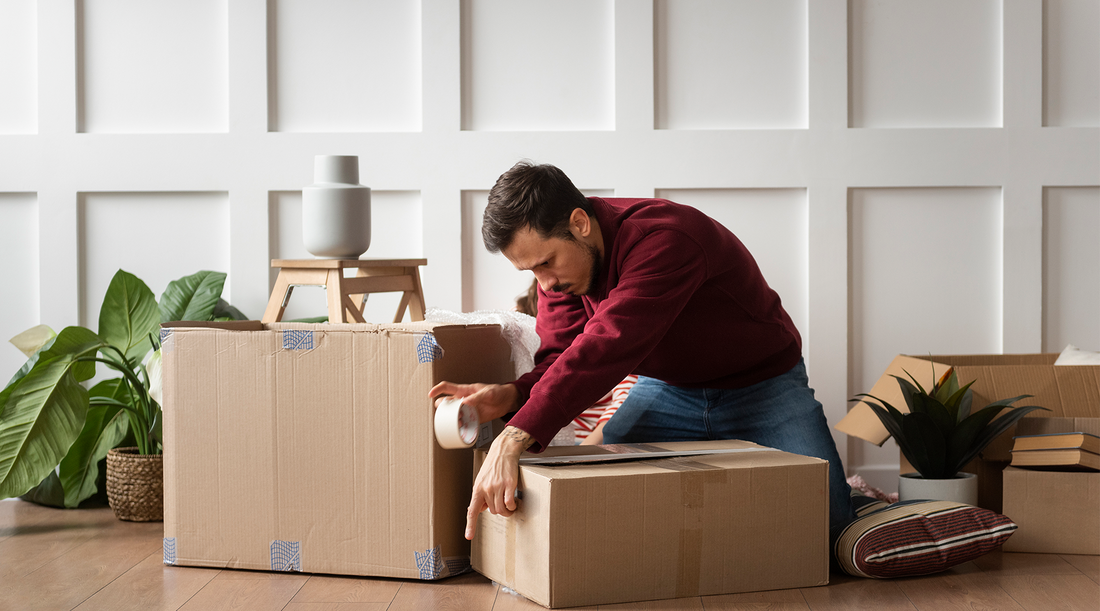Packing Paper: Moving Made Easy

Moving can be a stressful and chaotic process, but with the right tools and supplies, it doesn't have to be. One of the most important supplies you'll need for a successful move is packing paper. Whether you're moving fragile items like dishes or electronics, or just trying to protect your belongings in transit, it is a versatile and affordable solution that can help you get the job done.
So, what exactly is packing paper, and what household items should you wrap in it? Let's dive in!
What is Packing Paper?
Moving packing paper is a type of paper used to protect items during a move. It's typically made from recycled newsprint and is biodegradable and recyclable, making it an eco-friendly option. Packing paper is soft, absorbent, and non-abrasive, making it ideal for wrapping and protecting a wide range of household items.
What to Wrap in Packing Paper
Almost any household item can be wrapped in packing paper, but it's particularly useful for delicate items such as dishes, glassware, vases, picture frames, and other fragile items. You can also use it to wrap clothing, linens, and books, as well as to cushion and protect items inside boxes during transit.
The Benefits of Honeycomb Packing Paper
Honeycomb packing paper is a special type of packing paper that's made with a unique honeycomb design. This design provides extra cushioning and protection to help keep your items safe during transit. Honeycomb paper is particularly useful for delicate items, such as glassware, china, and other fragile items, as it provides an extra layer of protection to prevent breakage.
RELATED: Honeycomb Paper vs Bubble Wrap: Which is Better?
Tips and Tricks for Using Packing Paper During Your Move
Choose the right size. When selecting packing paper, it's important to choose the right size for your needs. Large sheets or rolls can be cut to the size you need, making it easy to wrap around your items.
Wrap fragile items carefully. When wrapping fragile items, make sure to use enough paper to fully cover the item and provide cushioning. Use extra sheets of paper to pad corners, edges, and any other areas that may be susceptible to breakage.
Label boxes clearly. When packing items with packing paper, make sure to label each box with a clear and concise description of its contents. This will help you keep track of what's in each box and make it easier to unpack when you reach your new home.
Use packing paper for filler. In addition to wrapping items, you can also use packing paper to fill the gaps in boxes and help prevent items from shifting during transport. Simply crumple up sheets of paper and place them around items in the box to keep them secure.
Store leftover packing paper. After your move, you may have leftover packing paper. Rather than throwing it away, consider storing it for future use. Packing paper can come in handy for future moves, or even for packing items for storage.
Extra protection to your valuable items
While honeycomb packing paper is a strong and durable option for protecting items during a move, it may not provide enough protection for extra fragile items. In these cases, it's a good idea to add extra protection. Here are some common alternatives:
Bubble wrap: Bubble wrap, for example, is a plastic material that is made up of small air-filled bubbles. When used in combination with honeycomb paper, bubble wrap can provide extra cushioning and help absorb shock during transit. Simply wrap the item in a layer of packing paper, and then wrap it in bubble wrap to secure it in place.
Foam: Foam is another option for providing extra protection during a move. There are several types of foam available, including foam peanuts, foam sheets, and foam blocks. Foam peanuts are small pieces of foam that can be used to fill boxes and protect items from shifting. Foam sheets and blocks can be cut to size and used to wrap items and provide extra cushioning.
Tissue paper: Tissue paper is another alternative to packing paper. It's soft, gentle, and doesn't leave any residue on your items. However, it doesn't provide as much protection as packing paper or bubble wrap.
Towels, blankets, and clothes: If you're looking for a more sustainable alternative to packing paper, consider using towels, blankets, and clothes to wrap and protect your belongings. This can be a great way to reuse items you already have, and it's more environmentally friendly than using disposable packing materials.
Ultimately, the best alternative to packing paper will depend on your specific needs and the items you're trying to protect. When packing extra fragile items, it's important to use a combination of materials to provide the best protection. Start by wrapping the item in packing paper, and then add additional layers of bubble wrap or foam to provide extra cushioning. Make sure to fill any gaps in the box with more packing materials to prevent items from shifting during transport.

Getting the Most Out of Your Packing Paper
There are many ways to reuse honeycomb packing paper, whether you're a small business owner, a homeowner, or someone looking to reduce waste. By finding creative and practical ways to reuse this versatile material, you can help to minimize your impact on the environment and make the most of your resources.
Save and reuse the paper: After you've unpacked, save the packing paper that was used to protect your belongings. You can use it again in the future to protect your items when you move or store them.
Share with friends and family: If you have excess packing paper, consider sharing it with friends and family who are also moving or need to store items. This way, you can reduce waste and help others at the same time.
Recycle it: If you can't reuse your packing paper, recycle it instead. Packing paper is usually made from recycled materials, so recycling it will help to keep the materials in use.
Get creative: If you're looking for ways to reuse packing paper, consider using it for other purposes. For example, you can use it as wrapping paper for gifts, as a makeshift tablecloth, or as filler for gift baskets.
Packaging products: Another way to reuse honeycomb packing paper is for small business owners to use it for packaging and shipping items. If you're a small business owner and you receive shipments of products, you can also save and reuse the honeycomb paper from those shipments for your own outgoing shipments. This is an excellent way to reduce waste and be more environmentally friendly, as you're repurposing materials that would otherwise end up in the landfill.
In conclusion, packing paper is an essential moving supply that can help protect your belongings during transit. Whether you're wrapping delicate items, clothing, or anything in between, packing paper is a versatile and eco-friendly option.



